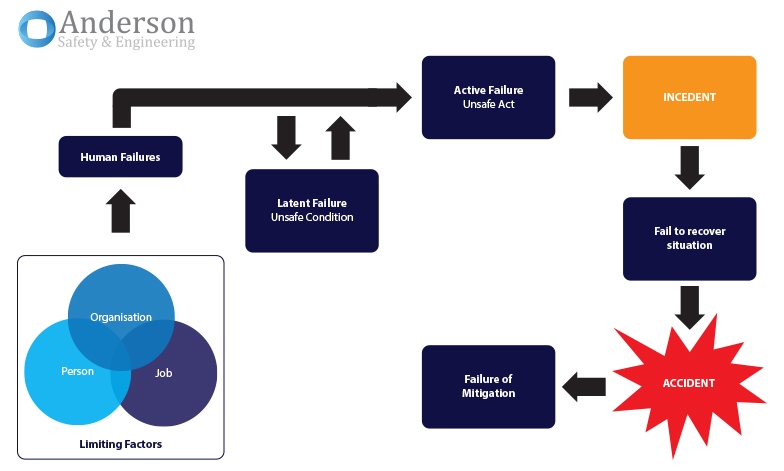Human Factors
Reducing error and influencing behaviour to reduce workplace riskHealth and Safety Executive’s (HSE) definition for human factors refer to personal, organisational and job factors, which influence behaviour at work in a way which can affect health and safety.
Around 80% of accidents at work may be directly or partly attributed to human errors, therefore human factors assessment is important as it can reduce the number of incidents and accidents at work and may also improve the efficiency and effectiveness of any workforce.
The consequences of human failure can be classified into two broad categories:
Active Failure
This type of failure has an immediate impact on health and safety when there is no room for errors and are caused usually by front line people, i.e. drivers, machine operators etc.
Latent Failure
This type of failure potentially provides greater danger to health and safety than active failures. Latent failures are made by people whose tasks are removed in time and space from operational activities leading to management system failures.
Typical latent failure examples include:
- Poor design of plant and equipment.
- Ineffective training and communication.
- Inadequate supervision.
What we can offer?
Human Factor Engineering or Human Factor Integration support during design and development of systems and services. Determine the suitability of plant and equipment, processes and operations using techniques such as Hierarchical Task Analysis (HTA), Techniques for Human Error Analysis (THEA), Human Error Assessment and Reduction technique (HEART) etc.
Review of outputs and assessment of processes for maintenance, inspection and testing activities for major hazards plants. Integration of human factors into risk assessment and investigations including Safety Management Systems. Consideration of individual task and organisational factors to reduce human errors in the workplace.


